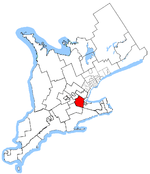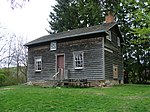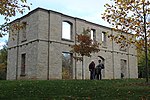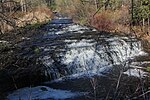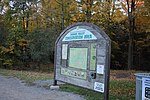Copetown, Ontario

Copetown is a rural neighbourhood of the city of Hamilton, Ontario, Canada, located northeast of Brantford. William Cope, a United Empire Loyalist from the U.S. state of New York settled here in 1794. The community was renamed after his son Conradt in 1851. The current population of this community is approximately 130 residents. This community is located within the 905 area code for telephones and the postal forward sortation area in this region is L0R. Dundas Hill is located nearby, signifying its closeness to Dundas. The community is located 40 miles (64 km) away from Toronto. Copetown is a short eastbound drive away from Flamboro Downs and is located relatively close to downtown Dundas.
Excerpt from the Wikipedia article Copetown, Ontario (License: CC BY-SA 3.0, Authors, Images).Copetown, Ontario
Highway 52, Hamilton
Geographical coordinates (GPS) Address Nearby Places Show on map
Geographical coordinates (GPS)
| Latitude | Longitude |
|---|---|
| N 43.244191666667 ° | E -80.056372222222 ° |
Address
Highway 52 (Hamilton Route 52)
Highway 52
L0R 1J0 Hamilton
Ontario, Canada
Open on Google Maps

